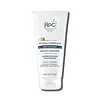What's inside
What's inside
 Key Ingredients
Key Ingredients

 Benefits
Benefits

 Concerns
Concerns

 Ingredients Side-by-side
Ingredients Side-by-side

Water
Skin ConditioningPropanediol
SolventPPG-24-Glycereth-24
EmulsifyingGlycerin
Humectant3-O-Ethyl Ascorbic Acid
Skin ConditioningTroxerutin
Skin ConditioningCistus Incanus Flower/Leaf/Stem Extract
Skin ConditioningNonapeptide-1
Skin ConditioningPolygonum Aviculare Extract
EmollientTerminalia Ferdinandiana Fruit Extract
AntioxidantPEG-40 Hydrogenated Castor Oil
EmulsifyingSodium Polyacryloyldimethyl Taurate
Emulsion StabilisingPPG-26-Buteth-26
Skin ConditioningMaltodextrin
AbsorbentCaprylyl Glycol
EmollientPotassium Sorbate
PreservativeSodium Phosphate
BufferingSodium Benzoate
Masking1,2-Hexanediol
Skin ConditioningTetrasodium EDTA
Disodium Phosphate
BufferingCitric Acid
BufferingCaprylhydroxamic Acid
Parfum
MaskingLimonene
PerfumingLinalool
PerfumingCitral
PerfumingCI 15985
Cosmetic ColorantWater, Propanediol, PPG-24-Glycereth-24, Glycerin, 3-O-Ethyl Ascorbic Acid, Troxerutin, Cistus Incanus Flower/Leaf/Stem Extract, Nonapeptide-1, Polygonum Aviculare Extract, Terminalia Ferdinandiana Fruit Extract, PEG-40 Hydrogenated Castor Oil, Sodium Polyacryloyldimethyl Taurate, PPG-26-Buteth-26, Maltodextrin, Caprylyl Glycol, Potassium Sorbate, Sodium Phosphate, Sodium Benzoate, 1,2-Hexanediol, Tetrasodium EDTA, Disodium Phosphate, Citric Acid, Caprylhydroxamic Acid, Parfum, Limonene, Linalool, Citral, CI 15985
Water
Skin ConditioningPotassium Cocoate
EmulsifyingPEG-7
HumectantGlyceryl Cocoate
EmollientGlycerin
HumectantCocamidopropyl Hydroxysultaine
CleansingCocamidopropyl Betaine
CleansingAcrylates Copolymer
Disodium EDTA
Disodium Cocoamphodiacetate
CleansingCoco-Glucoside
CleansingDisodium Coco-Glucoside Citrate
EmulsifyingVitis Vinifera Seed Oil
EmollientRetinol
Skin ConditioningNiacinamide
SmoothingAllantoin
Skin ConditioningAloe Barbadensis Leaf
MaskingAloe Barbadensis Leaf Extract
EmollientGlycyrrhiza Glabra Root Extract
BleachingArginine
MaskingPolysorbate 20
EmulsifyingButylene Glycol
HumectantChlorhexidine
AntimicrobialChlorhexidine Digluconate
AntimicrobialPhenoxyethanol
PreservativeEthylhexylglycerin
Skin ConditioningBHT
AntioxidantCitric Acid
BufferingWater, Potassium Cocoate, PEG-7, Glyceryl Cocoate, Glycerin, Cocamidopropyl Hydroxysultaine, Cocamidopropyl Betaine, Acrylates Copolymer, Disodium EDTA, Disodium Cocoamphodiacetate, Coco-Glucoside, Disodium Coco-Glucoside Citrate, Vitis Vinifera Seed Oil, Retinol, Niacinamide, Allantoin, Aloe Barbadensis Leaf, Aloe Barbadensis Leaf Extract, Glycyrrhiza Glabra Root Extract, Arginine, Polysorbate 20, Butylene Glycol, Chlorhexidine, Chlorhexidine Digluconate, Phenoxyethanol, Ethylhexylglycerin, BHT, Citric Acid
Ingredients Explained
These ingredients are found in both products.
Ingredients higher up in an ingredient list are typically present in a larger amount.
Citric Acid is an alpha hydroxy acid (AHA) naturally found in citrus fruits like oranges, lemons, and limes.
Like other AHAs, citric acid can exfoliate skin by breaking down the bonds that hold dead skin cells together. This helps reveal smoother and brighter skin underneath.
However, this exfoliating effect only happens at high concentrations (20%) which can be hard to find in cosmetic products.
Due to this, citric acid is usually included in small amounts as a pH adjuster. This helps keep products slightly more acidic and compatible with skin's natural pH.
In skincare formulas, citric acid can:
While it can provide some skin benefits, research shows lactic acid and glycolic acid are generally more effective and less irritating exfoliants.
Most citric acid used in skincare today is made by fermenting sugars (usually from molasses). This synthetic version is identical to the natural citrus form but easier to stabilize and use in formulations.
Read more about some other popular AHA's here:
Learn more about Citric AcidGlycerin is already naturally found in your skin. It helps moisturize and protect your skin.
A study from 2016 found glycerin to be more effective as a humectant than AHAs and hyaluronic acid.
As a humectant, it helps the skin stay hydrated by pulling moisture to your skin. The low molecular weight of glycerin allows it to pull moisture into the deeper layers of your skin.
Hydrated skin improves your skin barrier; Your skin barrier helps protect against irritants and bacteria.
Glycerin has also been found to have antimicrobial and antiviral properties. Due to these properties, glycerin is often used in wound and burn treatments.
In cosmetics, glycerin is usually derived from plants such as soybean or palm. However, it can also be sourced from animals, such as tallow or animal fat.
This ingredient is organic, colorless, odorless, and non-toxic.
Glycerin is the name for this ingredient in American English. British English uses Glycerol/Glycerine.
Learn more about GlycerinWater. It's the most common cosmetic ingredient of all. You'll usually see it at the top of ingredient lists, meaning that it makes up the largest part of the product.
So why is it so popular? Water most often acts as a solvent - this means that it helps dissolve other ingredients into the formulation.
You'll also recognize water as that liquid we all need to stay alive. If you see this, drink a glass of water. Stay hydrated!
Learn more about Water